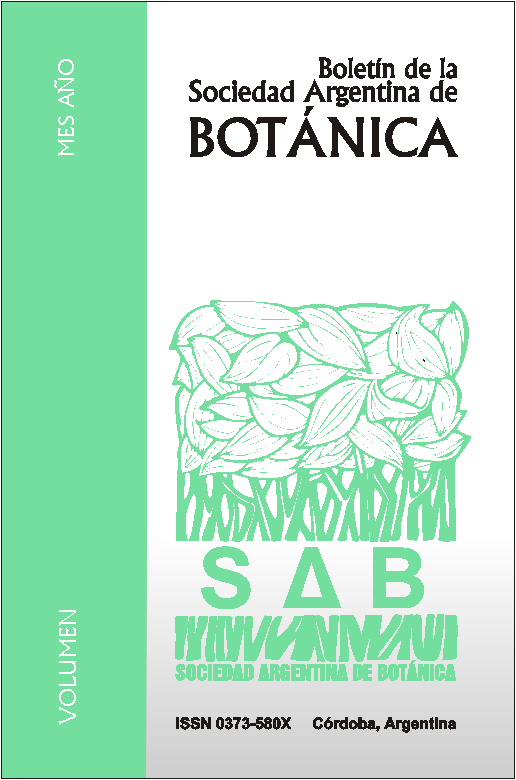First records of Equisetites sp. (Equisetaceae) in quaternary sediments on the Bermejo River (Formosa, Argentina)
DOI:
https://doi.org/10.31055/1851.2372.v49.n3.9469Keywords:
Eastern Chaco, Equisetites, Holocene, Impressions.Abstract
First records of Equisetites sp. (Equisetaceae) in quaternary sediments on the Bermejo River (Formosa, Argentina). The Chaco region is a vast sedimentary basin covered by Quaternary sediments. The vegetation changes from xeromorphic forest and thickets in the Western Chaco to semideciduous forest intermingled with extensive palm-savannas in the Eastern Chaco. In the Eastern Chaco, different Holocene impressions of plants appear in the banks of the Bermejo River (Villa Escolar, Formosa). Equisetites Sternberg. impressions occur in these sediments, and could prove useful to reconstruct the kind of past vegetation in the Eastern Chaco. We analyzed five morphological variables in a total of 12 fossil stems. The stems showed the typical articulation of Equisetaceae, with 9 to 16 carinals and 5 to 8 traces of lateral branches. Then, fossils were compared with the native extant species: E. bogotense H. B. K. and E. giganteum L. using multivariate methods. Due to their characteristics, the impressions showed a greater similarity to E. giganteum, being the first record of impressions for the Eastern Chaco region. The presence of this species showed that the environment in the recent past was humid like the present.
Downloads
Downloads
How to Cite
Issue
Section
License
Provides immediate and free OPEN ACCESS to its content under the principle of making research freely available to the public, which fosters a greater exchange of global knowledge, allowing authors to maintain their copyright without restrictions.
Material published in Bol. Soc. Argent. Bot. is distributed under a Creative Commons Attribution-NonCommercial-ShareAlike 4.0 International license.









